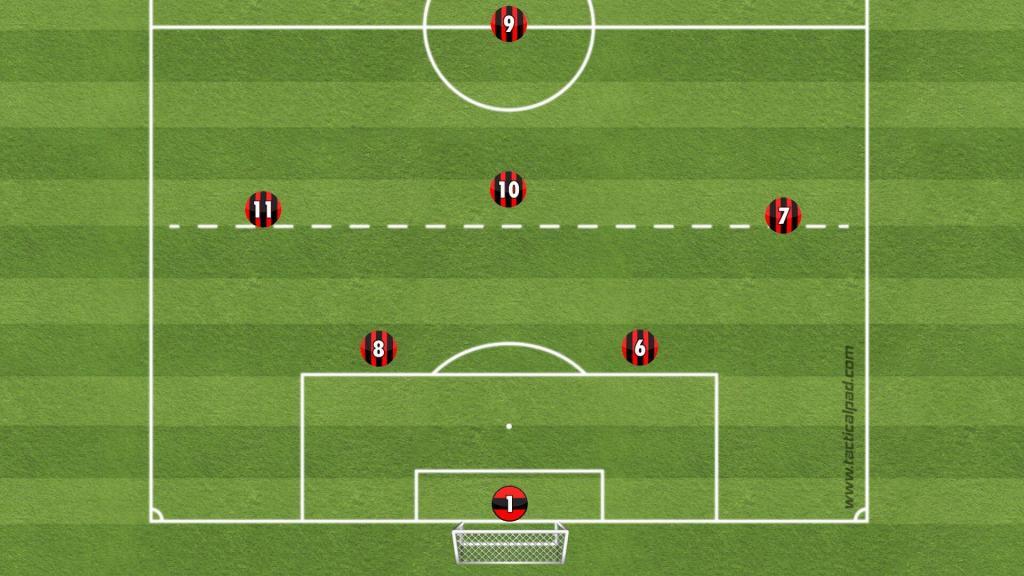In this series of articles, we’ll discuss the 7v7 format for the U9/U10 age groups. Many coaches, in particular in a recreational environment or in smaller competitive clubs, are new to the 7v7 format. Often the coaches in these age groups are parents of players who are being introduced to the format. The intent of the series is provide ideas, information, background, and tools to support player growth and coach development.
We will discuss in some detail two specific systems of play (formations) used in 7v7: the 1-2-3-1 and the 1-3-2-1. As formations are indicated from back-to-front, we mean the systems that include the goal keeper (the first “1”), either 2 or 3 backs, either 3 or 2 midfielders, and a forward. In the series, we will use the full game as our basis and relate the game tactics and strategies to a model of age-appropriate player development.


A large body of work on the topic of player development for the U9/U10 ages is focused on the context of long-term athletic development (LTAD) – the progression of abilities from the youngest ages to adulthood. The U9/U10 age groups form a transition period in terms of socialization, maturity, and athletic attributes. As coaches, we need to understand the characteristics and needs of our players – collectively and individually – and provide an environment that is both supportive and challenging.
For many participants – players and parents – the weekend game is the “point” of youth soccer. Most parents do not attend practice sessions and are unaware of the learning experiences that their player receives outside of the weekend game. Success or failure is defined by a final score and by the results of the player – how many goals scored, how many minutes played, and how many key moments.
The tension between an abstract model of player development – a process focus – and the results focus of players and parents can create a dilemma. Communication between the coach, player, and parents on the goals, objectives, and methods is an important tool in balancing focus. Consistency by the coach in executing on methods is key. Telling one story and acting differently can create new problems.
A primary goal in this age group is to support a relationship between the player and the sport – encouraging players to return for subsequent seasons. Many players in these age groups participate in multiple sports, sometimes concurrently. As a coach, we need to (1) recognize this and (2) support each player’s decisions to participate. Research has identified three attributes that support self-determination and motivation – autonomy, connectedness, and competence. We will come back to these attributes throughout the series.
A related goal is to aid players in their development of the abilities to be successful in the game – technical (skills), tactical (game understanding), physical, and psychosocial. A reason that many players quit sport is due to not having fun. It is difficult to have fun at a game when one does not have the skills to succeed. Developing competence – the skills required to be successful in the game – and autonomy – the ability and freedom to make decisions – will be key indicators as to whether a player continues in the sport.
Rather than working from an abstract model of player development, we will instead start from the “end” – the game – and work backwards. We will do this with an overall focus on the player using evidence-based practices. The belief is that – with an understanding of the requirements of the game – we can identify key learning experiences for the players to support their success.
In the next article, we will introduce the 7v7 format, basics of systems of play, and responsibilities.
References
Balyi, I., & Hamilton, A. (2004). Long-term athlete development: trainability in childhood and adolescence. Olympic Coach, 16(1), 4-9.
Ryan, R. M., & Deci, E. L. (2000). Self-determination theory and the facilitation of intrinsic motivation, social development, and well-being. American psychologist, 55(1), 68.
Strean, W. B., & Holt, N. L. (2000). Coaches’, athletes’ and parents’ perceptions of fun in youth sports: Assumptions about learning and implications for practice.